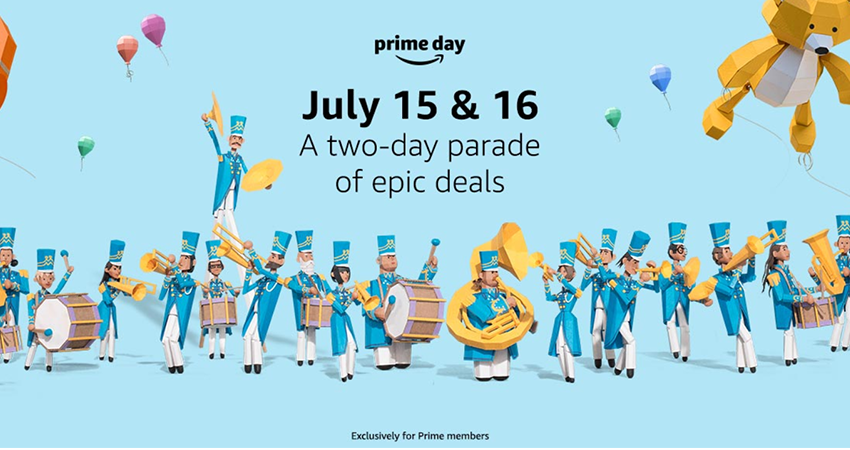Amazon’s Prime Day 2018 became the biggest shopping day in its history, beating out Cyber Monday and Black Friday, resulting in a whopping 100 million products sold and an estimated $3.4 billion in sales. With two full days of deals (the longest yet) and 50 million Americans planning to shop, this year is poised to be bigger than ever — and it’s not just Amazon who will see a lift.
Prime Day has expanded beyond Amazon as well. Brands participating in Amazon’s Prime Day 2019 can expect to see a 3-4X increase in sales during the 48 hour shopping event. Last year, online ad firm, Criteo found that even retailers not selling on Amazon, but who anticipated the timing, saw a 30% boost in sales of their own.
With the July event continuing to expand both on and off Amazon, it is critical for retailers and brands to have a strategy in place to win this year’s Prime Day, even when you’re not Amazon. Here are four ways to help you do just that.
Offer bigger discounts, on few items.
Don’t miss out on a huge opportunity just because it’s Amazon’s day. All retailers should take this opportunity to offer eye-catching deals. To make it work for your brand, consider offering steeper markdowns on fewer items. A survey by Profitero found that even retailers who offer a modest discount of 20 percent can expect a 2X increase in sales. If discounting goes against your brand, heavily communicate the limited availability of the one-time perk to create urgency without causing long-term brand erosion.
If you can segment VIP shoppers or have a loyalty program in place, consider taking a page out of Amazon’s book and reward your loyal shoppers with exclusive Prime Day discounts and perks like free expedited shipping.
Supercharge your sales with brand storytelling
To compete against the ease and speed of Amazon, focus your promotions, advertising campaigns, and product content on brand storytelling. Build a narrative around your product — why it exists, how it was made, and what consumers can do with it to create a human connection with your brand. Once the brand story is in place, segment past customers by age, location, order history or status to deliver highly personalized email campaigns over the two-day event.
Use brick-and-mortar to your competitive advantage
Retailers with physical outlets should make stores a centerpiece of Prime Day promotions with exclusive offers and product launches, both online and in-store. For example, use the storefront to offer pop-up experiences, in-store only discounts, or limited-edition product drops.
If you’re a digital-only brand or you aren’t sure how to tackle a pop-up event, remember there’s strength in numbers. Consider teaming up with other local vendors to build a Prime Day experience that highlights the community going on around you.
Make returns your greatest retention tool
In order to compete on Prime Day, make sure you have an easy and free returns policy in place. A hassle-free returns experience will put shoppers’ minds at ease making it easier to buy, while increasing their likelihood to come back again. As Craig Adkins of Zappos put it, “Our best customers have the highest returns rates but, they are also the ones that spend the most money with us and are our most profitable customers.”
Make no mistake, Amazon Prime Day will likely be another record-breaking year for the e-commerce giant. But with one-third of Prime Day shoppers planning to browse other online retailers’ offers, that’s still a big slice of the retail pie. To win the pockets of this year’s Prime Day shoppers, deliver the personal, emotional, and loyalty-inspiring shopping experiences that set your brand apart.
Eduardo Vilar is CEO of Returnly

